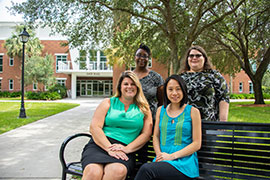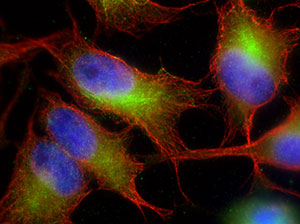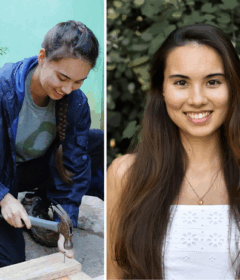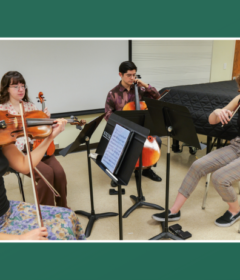Stetson Receives NSF Grant for New Microscope


By virtue of a Major Resource Instrumentation Grant from the National Science Foundation, Stetson is receiving $266,000 in funding to purchase an inverted fluorescent microscope system — capable of imaging over a wide range of living biological samples from subcellular structures to small organisms.
The microscope system will be used to engage undergraduate students across biology, health sciences and physics in superior training through faculty-mentored research projects, and promote the implementation of inquiry-based lab experiences for students in upper-level biology and physics courses.
Also, the system will provide a substantial foundation to support and enable fundamental pioneering research by junior faculty members, and foster sophisticated capstone research for seniors under the mentorship of faculty members committed to student training and advancing the participation of underrepresented and minority undergraduates in the sciences.

Collectively, these invaluable experiences will promote scientific competency in students as they achieve a comprehensive range of career goals and contribute to the development of the next generation of scientists.
Highlights of the anticipated research: 1) tracking migrating cells in living tissues to link cellular and subcellular mechanisms to tissue-scale movements; 2) examining improperly located cell death proteins in malignant cells; 3) dissecting communication pathways that regulate cardiac myocyte cell proliferation and regeneration in Ciona intestinalis; 4) examining spatial organization and dynamics of iridescent marine bacteria; and 5) promoting education through use of CRISPR/Cas9 gene editing technology by undergraduates in a Genetics course to manipulate and label genes in order to visualize effects in living organisms.
“This really opens up new avenues of research at the cell and, especially, the subcell level at Stetson. We have a growing number of researchers who work with that scale in three departments. And it will allow students to use a research-grade microscope.”
Principal Investigator Holley Lynch, PhD, assistant professor of physics
Stetson’s Principal Investigator is Holley Lynch, PhD, assistant professor of physics. Co-Principal Investigators are Lynn Kee, PhD, assistant professor of biology; Roslyn Crowder, PhD, associate professor of biology; and Heather Evans-Anderson, PhD, assistant professor in the Department of Health Sciences.
“This really opens up new avenues of research at the cell and, especially, the subcell level at Stetson,” Lynch said. “We have a growing number of researchers who work with that scale in three departments. And it will allow students to use a research-grade microscope.”
Lynch noted that while some of Stetson’s science faculty/researchers need to see “very small things, such as look inside cells,” others need to see how cells behave over time. The new system, which is expected to arrive on campus later this fall, is “flexible,” she said.
Evans-Anderson agreed, commenting, “This kind of imaging will help all of us.”
In 2018, Kresge Foundation funds led to Stetson’s acquisition of an advanced stereo microscope, which effectively aids in the visualization of tissue layers and development of organisms. The new microscope system will deliver even greater power of magnification and capability to see inside cells, Evans-Anderson said, adding that extensive interdepartmental collaboration will result.
“I see this as a really good steppingstone. Having this equipment here enables us to apply for other kinds of grants that will fund our research and take our students to the next level,” Evans-Anderson concluded.
Notably, the NSF, with an annual budget of $8.1 billion (FY 2019), is the funding source for approximately 27% of the total federal budget for basic research conducted at U.S. colleges and universities.
-Michael Candelaria



